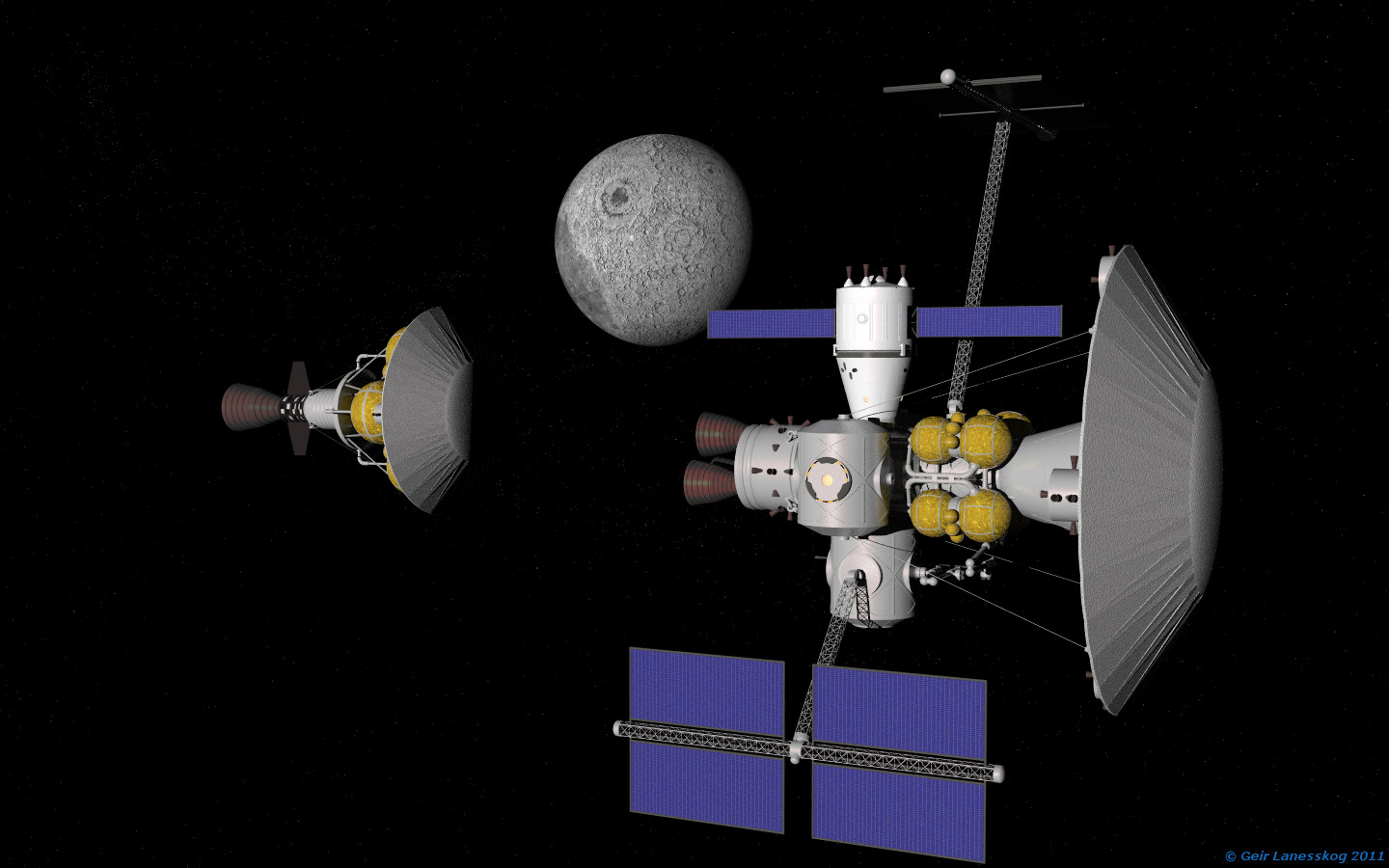
Trans Mars Injection
The design goal was to make a Mars exploration ship based on direct engineering
applications at current technologies with the aim of coming up with something
under 200 metric tonnes that could be launched by the mid-late 2020s (or today,
if funding, design and construction were instantaneous).
The spacecraft stack, as shown in this image consists of two major sections; The
Trans Mars Injection (TMI) stage, seen at left, and the Exploration Stack
(right).
The TMI stage is a nuclear thermal rocket stage using liquid hydrogen propellant
to launch the stack into a 180 day transfer orbit towards Mars. This puts both
the TMI and exploration stages on a two year free return path to Earth, allowing
for eventual Earth capture (using the aerobrake shield) and re-use of the TMI
stage, plus automatic return if something goes wrong with the Exploration Stac
The Exploration Stack supports a crew of four and consists (forward to back) of
an aerobrake shield, for Mars capture and eventual Earth return capture. Next,
a Mars lander, then an airlock and utility module, with attached liquid oxygen
and methane fuel tanks, a robot arm and the primary power plant, a 100kW nuclear
reactor on an extensible boom (towards the top of the image). Next is the
Central Node, with system control equipment and links to additional modules:
Left and right mounted habitation modules, lower mounted cargo node, with
another robot arm (though they can move from node to node, like the one on the
space station) and a 48kW backup solar array (only 19kW at the fainter sunlight
out by Mars). On top of the Central Node is the Earth Return Craft, based on
the SpaceX Dragon capsule, but with an extended range service module. Finally,
there is the engine stage, with thrusters and three main engines for the return
trip to Earth.
The standard mission profile calls for a six month voyage to Mars followed by
aerocapture and transfer to Phobos, from which the lander will launch to conduct
a thirty day "sprint" mission to the surface of Mars. Total stay at Mars is 21
months, including explorations of both Phobos and Deimos, plus remote operation
of the rover left by the Mars surface team. Subsequent expeditions would set up
a long duration Mars base (launched separately) and remain on the surface for
the full Mars stay duration. Return to Earth is another six month voyage ending
in aerocapture and transfer to the "Superdragon" for landing.
All pages and images ©1999 - 2010
by Geir Lanesskog, All Rights Reserved
Usage Policy




![]()